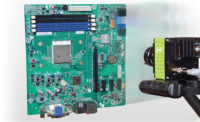Automated inspection systems help to improve the quality of parts and products. With few experienced CMM operators in the field, manufacturers are progressively turning to automated quality control solutions to not only stop production bottlenecks but also to boost the quality of the parts being inspected.
Automated systems are impervious to human error, and qualified employees can be assigned to more added-value tasks, such as data and inspection analyses. Because automated quality control improves inspection measurement reliability, it makes it easier to accurately measure intricate parts and high throughput production lines.
These systems can capture more data for large quantities of parts faster. Combined with sophisticated reporting capabilities, manufacturers can make better decisions based on more reliable results from a higher number of components.
As automated quality control systems capture inexhaustible amounts of 3D data, a manufacturer’s quality control operations can provide dynamic, real-time reviews of production quality as well as comprehensive compliance tests to clients.
This is where the real value of an automated inspection system comes in. The newly acquired data allows manufacturers to improve their upstream process, tighten the manufacturing tolerances and produce better quality.
Automating quality control can look different for every organization.
Whether manufacturers want to streamline data collection, overhaul their inspection processes, or minimize errors in real-time, implementing automated metrology software and applications will depend on the organization’s current needs and challenges. It could even vary by industry and product.
Adding automation into an existing production environment without interrupting production or significantly impacting operations can be challenging and expensive.
Manufacturers might start by scaling their automation investments, in lower-risk areas and then expand them as their budgets allow.
They should also configure the physical layout of the production areas so that automated test and inspection equipment can measure a high variety mix of products.
When it comes to automation complexities, manufacturers are generally most challenged by designing automated inspection systems that are flexible enough for users to seamlessly switch over to future parts without having to reprogram existing measurement software. This is especially true if the users have little background in automated optical inspection systems.
Ultimately, staff must communicate with each other about their goals and ensure that they are on the same page before making any moves.
Manufacturing is becoming automated on a broad scale. The technology enables manufacturers to affordably boost their throughput, improve quality and become nimbler as they respond to customer demands. Ultimately, this helps them become more efficient.




